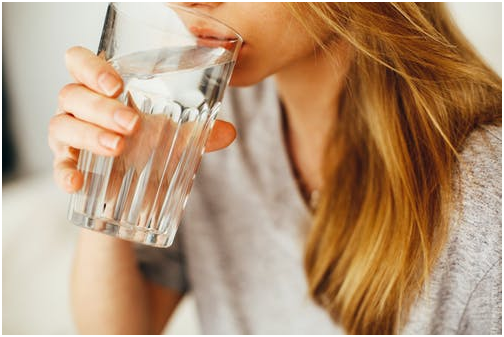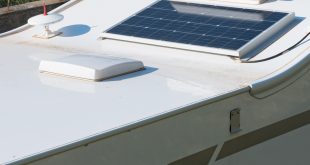The need to always have safe drinking water in your home cannot be overemphasized. Any water you or your family consumes should be purified and treated before it is considered safe for drinking.
Bottled water is obviously an alternative if you don’t want to treat and purify water yourself. But what if you don’t have bottled water, what purification options are available to you?

Fortunately, there are many options available to you, and each has its benefits and downsides.
For instance, if you want an easy water treatment technique, filtering is pretty easy to use. The problem is that it does not get rid of all the contaminants in the water. Filtering will get rid of sediments, but not minute contaminants and pathogens that are present in the water.
For best purification results, reverse osmosis is typically your best choice. It is a better alternative to distillation as it demands less energy and time to use.
But that is not to say there are no other options for you if you cannot use reverse osmosis.
If for one reason or another you cannot use reverse osmosis, then you still have these four water treatment options. These water purification methods will ensure that your water is safe for drinking.
1. Boiling
Boiling water is easy, and it will give you very safe drinking water. When water is boiled many of the contaminants in it are eliminated. The appearance of the water might not change after it has been boiled, but the water will be much safer for consumption after that since germs, viruses, and even bacteria will be destroyed by the heat.
For this method to work effectively, the water should be allowed to boil continuously for at least a minute after it reaches its boiling point. The period should be much longer if you live in high altitude areas where the boiling point of water is much lower.
After the water is thoroughly boiled, you should leave it to cool before you can start to drink it.
Obviously, if the water has visible contaminants in it such as soil or plant matter, you should filter them out before you boil it.
2. Filtration
Filtration is also a pretty effective way to purify water. However, for best results, you have to use the right kind of filter so that you get rid of all the bad compounds in the water.
Filtration can be both physical and chemical-based. But in the end, you should end up with water that is safe enough to drink.
The good thing about filtration is that it gets rid of both small and large particles in water. So, in addition to ridding the water of large visible particles, filtration can also remove small disease-causing pathogens from the water and make it safe for drinking.
Not surprisingly, filtered water is generally considered safer for drinking than water purified through other methods. The reason for this is that filtration is quite reliable at getting rid of unwanted chemicals from the water.
Another benefit to using filtration is that it is less expensive than, say, reverse osmosis and distillation. Not much water is lost during the process as is the case with distillation. Additionally, filtration tends to be more reliable at getting rid of smaller chemical molecules from the water than reverse osmosis.
3. Distillation
Distillation is the process of heating water to vapor form and then collecting that vapor. The reason this process makes water pure is that most contaminants boil at a higher temperature than water. Therefore, long before these compounds can reach their vaporization stage, water will have evaporated and condensed. Once the water vapor cools, it becomes safe for drinking. The contaminants in the water will then be left in the container due to their higher boiling point.
Some of the contaminants that can be removed from the water through distillation include bacteria, salts, heavy metals like mercury and arsenic, and even bacteria and viruses.
Distillation is more appropriate in cases where people are getting raw and untreated water.
While this water treatment method is quite reliable, it requires quite a bit of time and it spends a lot of energy. A lot of water can also get lost in during the purification process. Due to its cost implications, distillation works best when used on a small scale.

4. Chlorination
Chlorine has been in use as a water treatment chemical for many years. The reason is that chlorine is pretty powerful, and it is very good at killing germs and other disease-causing pathogens in the water while still ensuring that the water is safe for drinking.
Chlorine in tablet and liquid form can be used to purify water. A notable benefit to using chlorine is that it is pretty cheap, and using it in water purification is also quite easy.
Chlorine works best on water that is at least 21 degrees Celsius. Hot water absorbs this chemical more readily.
But it is not without its downsides. For instance, water treated with chlorine might not be very appropriate for people dealing with thyroid issues. Such people should not use chlorinated water without first speaking to a health professional.
Also, chlorinating water does not alter its hardness, and this can be an issue. Hard water is less effective at washing clothes, and it is also less suitable for drinking. In fact, hard drinking water can cause headaches and a host of other unintended side effects. An easy way to reduce the hardness of water in your house is through the use some of the best water softeners system.
Pure drinking water in your home means that you and your family does not have to experience problems such as illnesses due to consuming unsafe water. So, unless you have bottled water in your home, you have to ensure that the water you take is always clean. Only a single glass of unsafe drinking water is needed to make you suffer an infection. But fortunately, making water safe for drinking is pretty easy. Above are some simple options you can try. You can filter the water, boil it, distill it and even chlorinate it based on the method you find most favorable to you. And even after you have purified the water, remember to add a water softener to avoid headaches and other side effects of consuming hard water.
 World inside pictures Collect and share the best ideas that make our life easier
World inside pictures Collect and share the best ideas that make our life easier








